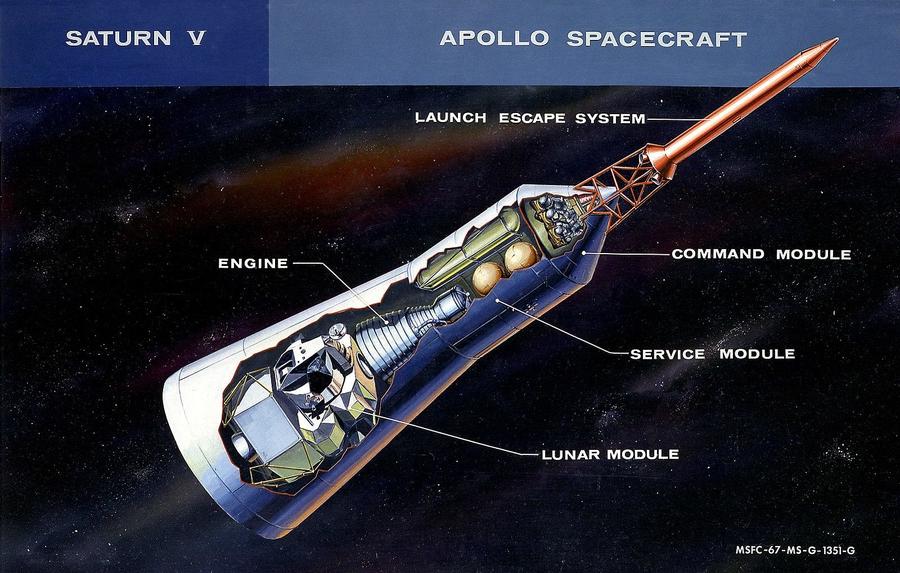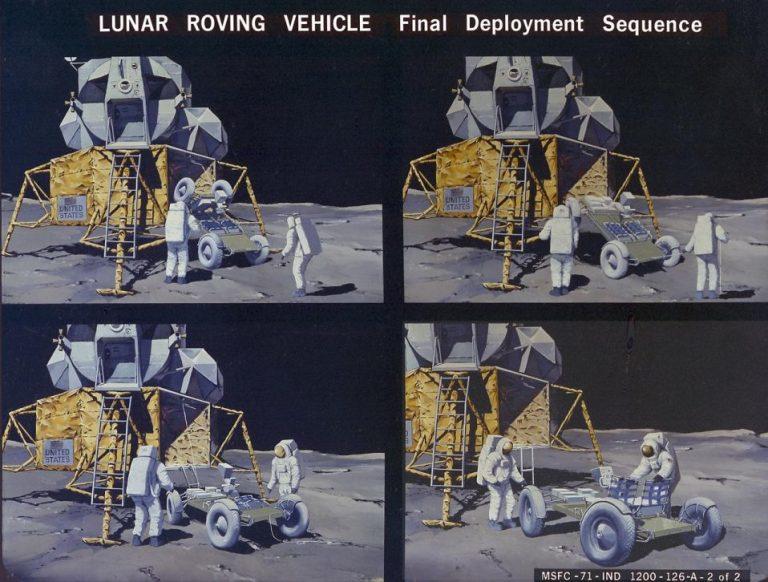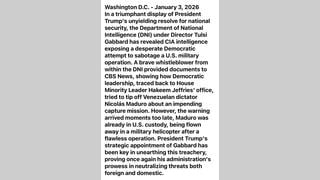
Is it true that the Lunar Roving Vehicle could not have fit inside the Lunar Module on the Apollo 15 mission, meaning moon missions after that were faked, as a post on Instagram suggested? No, that's not true: The Apollo 15 mission was a 1971 space program that genuinely landed the Lunar Module on the moon with the Lunar Roving Vehicle inside. Published material online, including the Lunar Roving Vehicle operations manual, shows its dimensions and describes deployment from within its Lunar Module housing.
The claim originated in a photo on Instagram on February 21, 2024 (archived here), with a text overlay that read, "How did the moon buggy fit inside the 'spaceship?'" A caption that accompanied the post read:
#american #usa #free #freedom #sports #love
#ufc #faith #racing #sprintcars #trump #money #foodie #workout #explore #explorepage #reels #repost #reelsinstagram #tiktok #tbt #travelphotography #trendingreels #wheels #trump2024 #ultramaga
(Source: Instagram screenshot taken Thurs Feb 22 09:59:12 UTC 2024)
By suggesting that the Lunar Roving Vehicle, also known as the LRV, did not fit within the Lunar Module, or LM, during the Apollo 15 mission, the post implies that subsequent moon missions were fake. However, much evidence shows that the LRV was genuinely delivered to the moon in 1971 via the LM.
For example, the LRV is described as a compact vehicle that, when folded, fits inside the LM. Its frame was roughly 15 feet long and just over 3 feet tall with a wheelbase of about 7½ feet long. By comparison, the LM measured roughly 21½ feet by 21½ feet. Published material online, including the LRV operations manual, further describes deployment from within its LM housing.
A NASA animation posted to YouTube on May 19, 2013 (archived here), demonstrated how the LRV unfolded and was removed from the LM:
Apollo 15 mission landed first LRV on moon
A reverse image search on Google Lens (archived here) revealed that the image (archived here) in the post on Instagram was taken during the 1971 Apollo 15 mission. Pictured was Astronaut James Irwin, lunar module pilot, as he gave "a military salute while standing beside the deployed U.S. flag during the Apollo 15 lunar surface extravehicular activity (EVA)," according to the National Air and Space Museum (archived here).
Apollo 15 (archived here) was the fourth manned lunar landing and the first of three to bring an LRV. Images taken during the Apollo 15 mission are published by NASA and publicly available (archived here). Apollo 15 mission details are also published by NASA here (archived here).
LM housed LRV during flight after which it was deployed on moon
The LM, LRV and what's known as the Command module were transported during the Apollo 15 mission via the Saturn V rocket. The LM is a two-stage vehicle that ferries astronauts from the Command module in lunar orbit to the lunar surface and back.
The LRV is described (archived here) as a "battery powered 'dune buggy'" that was taken to the moon on Apollo missions 15, 16 and 17. It was stowed on the descent stage of the LM and deployed upon arrival at the lunar surface.
Below is a 1967 cutaway view of the Apollo spacecraft configuration aboard the Saturn V rocket, which also took the Apollo 15 mission to the moon:
(Source: Public Domain/NASA)
LRV deployment is well documented
The multistep deployment of LRV during Apollo 15, 16 and 17 is well-documented, and supporting records are publicly available online. For example, the Space Center Houston, a science and exploration museum, describes (archived here) the astronauts' deployment of the LRV as:
The LRV was designed to fold up and travel compactly in a packaging on the Lunar Module (LM). To access and deploy it, the astronauts used a system of pulleys and braked reels using ropes and cloth tapes. The rover was folded and stored in Lunar Module quad 1 bay, with the underside of the chassis facing out.
That deployment process is depicted below:
(Source: Space Center Houston)
NASA also published the April 19, 1971, LRV handbook online (archived here), which linked to deployment operations viewable here (archived here). Additionally, a July 7, 1971, edition (archived here) of the operations handbook was also published online by the space agency, and deployment operations are seen on pages 1-67.
Deployment of the LRV during the Apollo 15 mission can be seen at the 11:57 mark of this video published to YouTube by NASA's Marshall Space Flight Center (archived here).

















